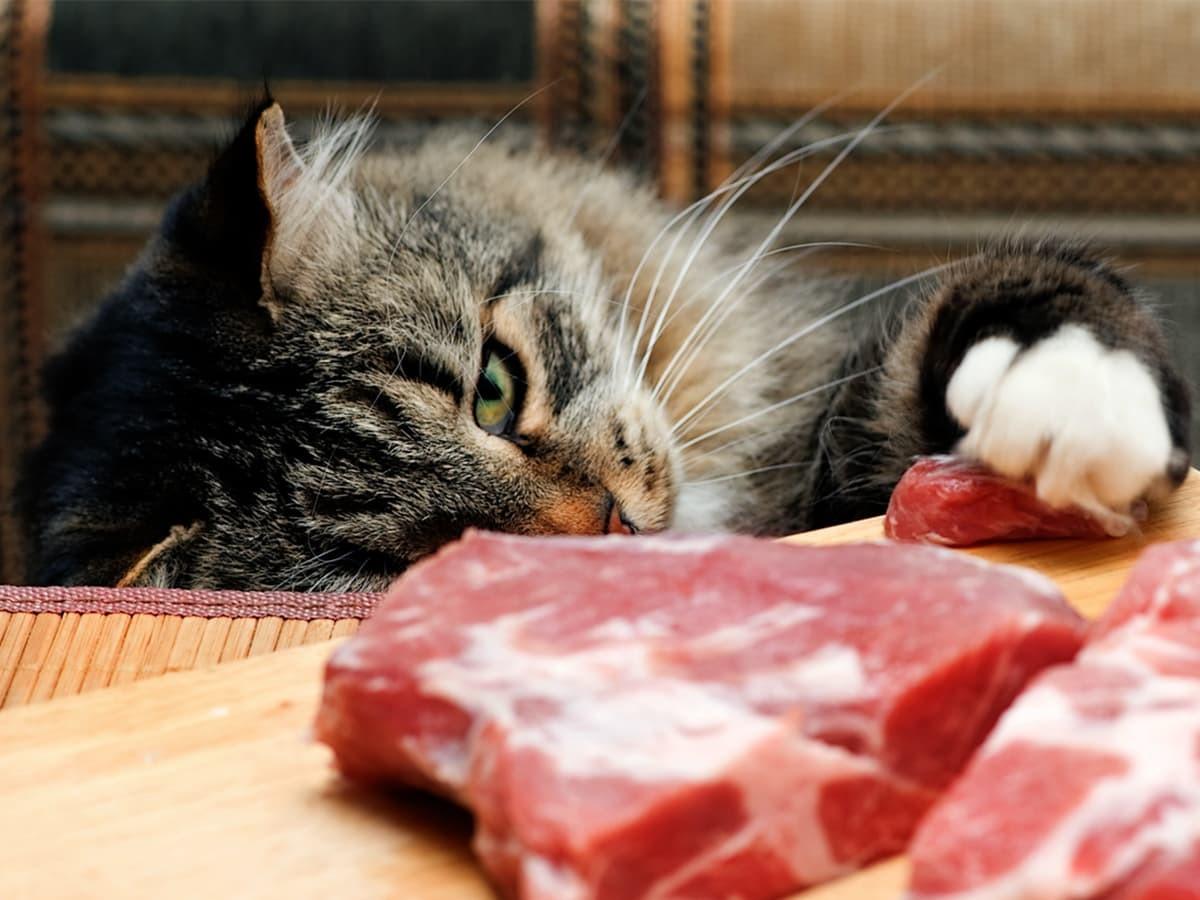It's easy to forget that cats are carnivores and that their natural diet typically includes; mice, squirrels, rabbits, insects, and birds. Their hunting behavior includes consuming raw meat, organs, flesh, contents of the gut, and bones. It appears that cats enjoy bones and that doing so can be beneficial for their health. But is this truly the case? And if so, which bones should a pet parent feed their cat?
Can I Feed My Cat Bones?
While you can feed your cat chicken bones, beef or pork bones may be too large and difficult for your cat to break down posing a choking hazard. Before you give your cat a chicken bone off your plate, there are a few more things you need to know. Including whether cats can have cooked bones, the amount of bones a cat should have, and how often it is okay to give a cat bones.
Do Cats Like Bones?
For many cats, their instinct to chew on a bone kicks in the moment you hand them a meaty chicken bone. In the wild, cats usually consume the entirety of their prey, bones included. Even if your cat was never a stray, they may still have an innate interest in eating bones. Many cats enjoy bones, but the real question is whether bones are healthy for a cat to eat.
Are Bones Good for Cats?
Raw bones can offer many benefits to your cat.1 Benefits may include:
Dental health – Plaque in your cat’s teeth can lead to gingivitis and tooth resorption. Research has shown that chewing bones can help massage the gums and scrape the teeth, removing the plaque.
Calcium – Bones are packed with calcium which helps muscles contract, regulates the heart's rhythm, and helps maintain proper nerve function.
Collagen – Collagen can be found throughout your cat’s body in their skin, bones, muscles, tendons, blood vessels, and digestive system. It helps in building joint and tendon health and can help enhance your furball’s skin and coat.
The bone marrow can also provide iron, vitamin E, and vitamin B12.2
How Much Bone is Okay for Your Cat?
You should only give your cat bones as an occasional treat, they should not be a part of a cat's regular diet. On the days that you do decide to give your cat bones, they should not make up more than 7-10% of their daily caloric intake.
How Should You Feed Bones to Your Cat?
Before giving your cat a bone to eat, it's essential to understand how to prepare it:
Dental Cleanings: If your cat is dealing with a dental disease like periodontal disease, it's advisable to have their teeth professionally cleaned before introducing any bones to their diet.
Raw Bones Only: Cooked bones tend to become soft and brittle, increasing the risk of shards getting stuck in your cat’s throat and posing a choking hazard. Additionally, they can cause harm to your cat’s mouth, throat, esophageal lining, and intestines, leading to internal bleeding. If not promptly treated, this can be fatal. Never give your cat cooked bones.
Size Matters: Raw chicken bones, such as necks and drumsticks, are safer to feed a cat because they are smaller in size. This also applies to fish bones from tinned salmon and sardines. Never give your cat bones too large for them to eat safely.
Never Leave Your Cat Alone with a Bone: Regardless of the type of bone you give your cat, never leave them alone while they eat it. Being present helps ensure that you can quickly respond in case of an accident or unforeseen issue.
What About Turkey Bones? Are They Safe?
The rule for turkey bones is consistent with other types of bones. Raw turkey bones are considered acceptable occasionally, but cooked ones are strongly advised against. Feeding a cat bones always comes with the risk of choking, so make sure you supervise your cat while they snack. While you can let your cat enjoy turkey, it's crucial to exercise caution with cooked bones.
Are Pork Rib Bones Safe for Your Cat?
Pork ribs can serve as a good source of protein and essential nutrients for your cat. Pork ribs are also leaner than other pork cuts, contributing to your cat's overall health and weight management. However, it's important to note that, similar to other bones, there is a potential risk of choking when feeding pork rib bones to your cat. Caution should be exercised to ensure their safety.
Downside of Feeding Bones to Your Cat?
While raw bones are generally considered safe for cats, it's important to be aware that they may carry harmful bacteria such as salmonella. These bacterial infections can be potentially fatal if not promptly treated.2 If your cat happens to consume bones, be vigilant for the following symptoms:
Diarrhea
High fever
Loss of appetite
Lethargy
In addition to bacterial concerns, there is a risk of teeth breaking when cats chew on bones. Furthermore, some cats may struggle to efficiently break down bones, leading to gastrointestinal issues.2 Monitoring your cat's behavior and promptly addressing signs of distress or illness is crucial when introducing bones into your cat's diet. If you observe any concerning symptoms, it's recommended to seek veterinary attention promptly to help ensure your cat's well-being.
Conclusion
The potential risks associated with feeding bones to your cat seem to outweigh the perceived benefits. While it may be considered relatively safe for your cat to consume raw bones like those from turkey or pork, the inherent risks such as choking, digestion problems, and the possibility of harmful bacteria entering the system cannot be ignored. Considering all factors, making a habit of feeding bones regularly doesn't appear to be a favorable option. Even if done occasionally, it is crucial to exercise the utmost care during feeding.
Alternatively, allowing your cat to indulge in a meat-rich diet and get essential nutrients from specially designed pet food seems to be a safer and more convenient approach. This helps ensure that your cat receives a balanced and nutritionally complete diet without exposing them to potential hazards associated with bone consumption. Here is a list of the best cat foods. Alternatively, if you want to add other healthy treats to your cat's diet, try adding non-toxic fruits and vegetables.

Mostly a tech person, always a pet person. I am dedicated to improving the lives of pets and their humans with technology. Off-duty, I enjoy writing about the misbehaving of computer programs and my two Aussiedoodles, Calvin and Hobbes.
McCoy, Jude. "Can Cats Eat Bones..." Bella and Duke, Aug. 13, 2024, https://www.bellaandduke.com/cats/expert-advice/cat-nutrition/can-cats-eat-bones/.
Layne, Misty. “Can Cats Eat Bones?” Hepper, Oct. 8, 2025, https://www.hepper.com/can-cats-eat-bones.
The information presented in this article is for educational and informational purposes only and does not constitute or substitute for the advice of your veterinarian.












